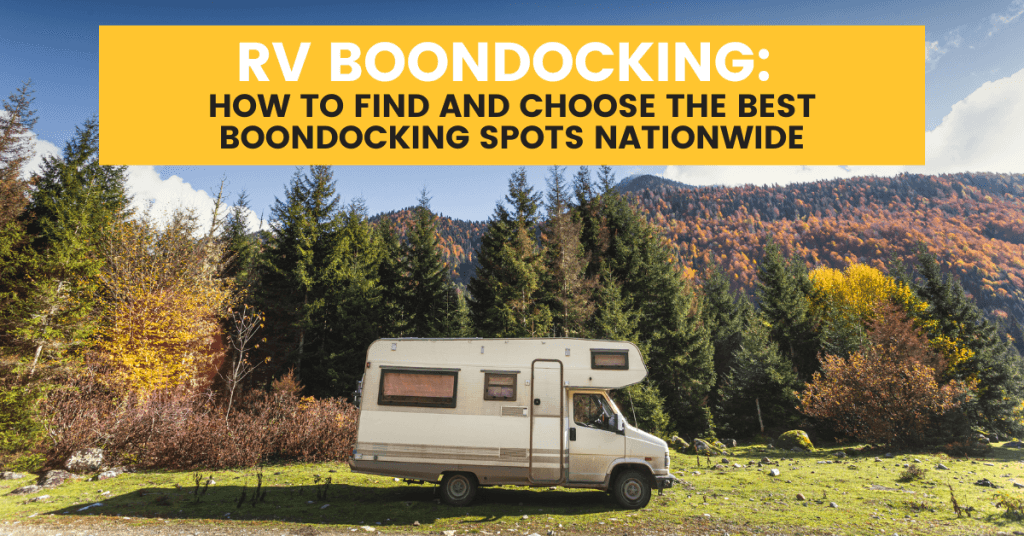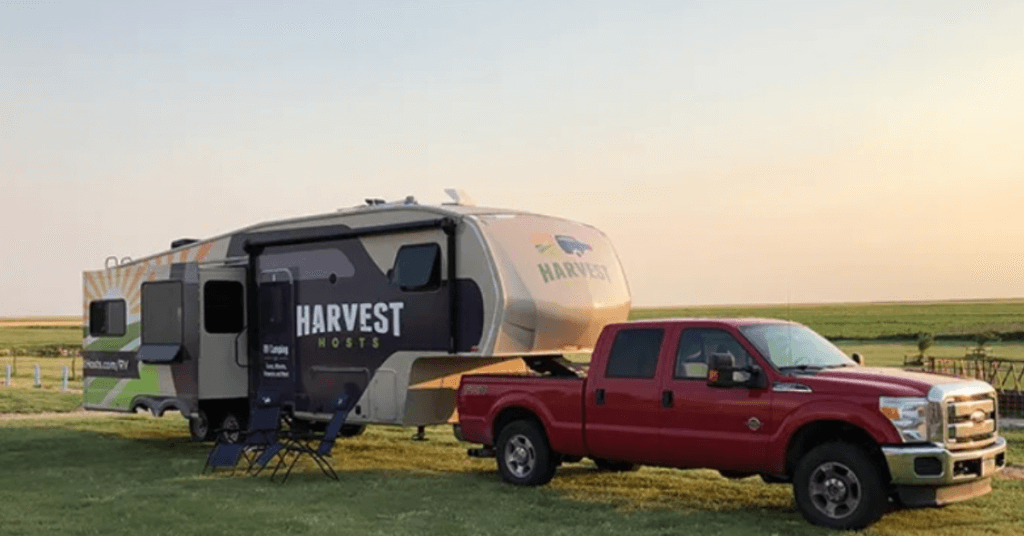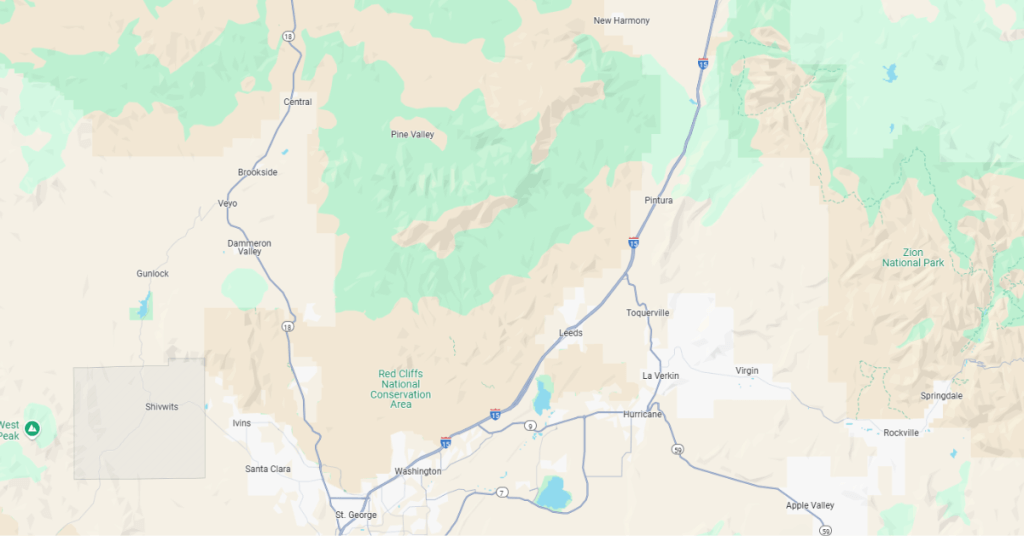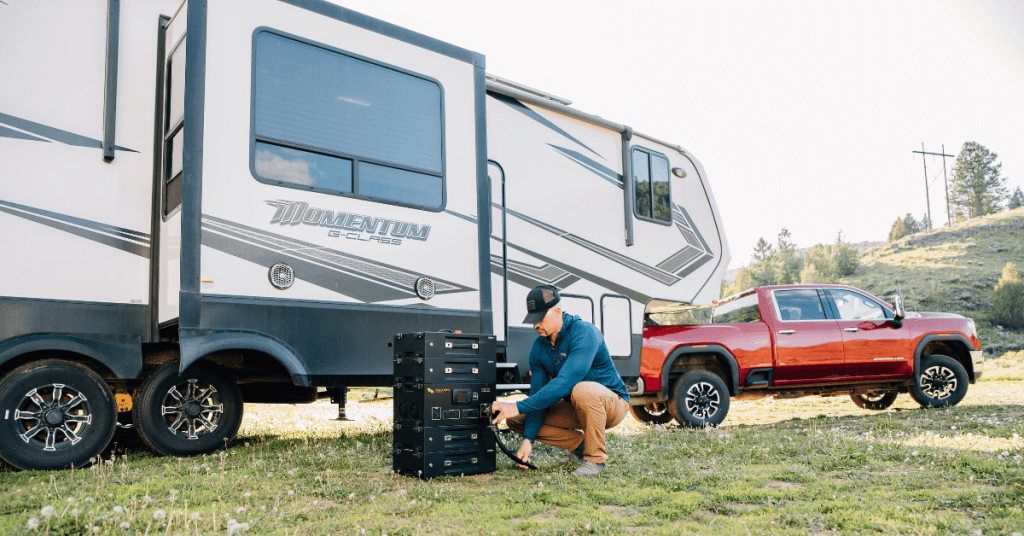Embarking on an RV boondocking adventure offers the unparalleled freedom of off-grid camping, allowing you to connect deeply with nature while exploring some of the most stunning landscapes across the United States. Mastering how to find the best boondocking sites involves utilizing a variety of resources, from specialized apps and websites to insights from fellow travelers. Whether you’re seeking secluded forest clearings, tranquil desert vistas, or picturesque lakeside spots, this guide will equip you with the knowledge to discover ideal boondock locations nationwide, ensuring your journey is both memorable and rewarding.

Boondocking, often referred to as dispersed camping or dry camping, is a form of camping that takes place on public lands without access to amenities such as water, electricity, or restrooms. This style of camping allows individuals to experience nature in its rawest form, often in remote and secluded areas.
Typically occurring on public lands managed by agencies like the Bureau of Land Management (BLM) or the National Forest Service, boondocking offers campers the chance to set up camp outside of designated campgrounds, providing a sense of freedom and adventure.
It’s important to note that boondocking requires campers to be self-sufficient, as there are no provided facilities. Practices such as Leave No Trace are essential to minimize environmental impact and preserve these natural spaces for future campers.
Leveraging online resources and mobile apps is essential for discovering prime RV boondocking sites across the United States. These platforms offer comprehensive information, including user reviews, GPS coordinates, and site conditions, to assist in selecting the perfect off-grid camping spot. Here are some top resources to consider:
Campendium is a great resource for campers, offering an extensive database of camping locations, including RV parks, campgrounds, and boondocking spots. Users can tailor their searches based on criteria such as price, amenities, and accessibility, ensuring they find sites that align with their specific preferences. Detailed reviews, photos, and cell service reports from fellow campers provide valuable insights into each location. Additionally, Campendium assists users in locating dump stations, addressing essential needs like emptying black and grey tanks and refilling water supplies.
iOverlander is a global database of camping spots, including numerous boondocking options in the U.S. The platform features user-submitted information on campsites, amenities, and road conditions, making it a valuable tool for overlanders and boondockers seeking off-the-beaten-path locations. Many consider iOverlander one of the best apps for finding boondocking locations.
The Dyrt offers a comprehensive platform with user-generated reviews and photos of campgrounds, including boondocking sites. Campers can search for locations based on specific criteria and gain insights from the experiences of others. The platform’s extensive database makes it a useful resource for discovering suitable boondocking sites.
FreeCampsites.net specializes in identifying free camping areas nationwide. Its interactive map allows users to locate campsites based on geographic preferences. Community-submitted reviews offer firsthand information about site conditions, accessibility, and experiences, aiding campers in making informed decisions. The site may not have a flashy design, but it provides valuable information for campers.

Bondocking on public lands managed by the Bureau of Land Management (BLM) and the U.S. Forest Service offers RVers abundant opportunities for boondocking amidst diverse, scenic and stunning landscapes. These areas provide a unique opportunity to camp in undeveloped settings, free from the amenities found in traditional campgrounds.
The BLM oversees vast tracts of public land, particularly in the western United States, that are often available for dispersed camping. Key considerations include:
Camping Duration: Campers are typically allowed to stay for up to 14 days within a 28-day period on BLM lands. After this period, they must relocate at least 25 miles from the previous site to prevent resource overuse.
Site Selection: It’s advisable to choose previously used sites to minimize environmental impact. Campers should set up at least 200 feet away from water sources to protect riparian areas.
Amenities: Dispersed camping areas typically lack facilities such as restrooms, water, or trash services. Campers must be self-sufficient and adhere to Leave No Trace principles, ensuring all waste is packed out.
National Forests across the country also permit dispersed camping, offering a variety of environments from dense woodlands to open meadows. Guidelines to consider:
Camping Duration: Campers may stay in a dispersed area for up to 16 days. After this period, they must move at least 5 road miles for camping in another dispersed area.
Site Selection: Dispersed camping or boondocking is allowed in a one-mile perimeter away from campgrounds and 200 feet from any stream, spring, or other water source. To prevent resource damage, it’s recommended to keep campsites within 150 feet from a roadway.
Permits: Groups exceeding 75 people require a special use permit. Campers should contact the local Forest Service office to check for any specific regulations or restrictions.
Vehicle Access: While many dispersed, boondocking camping sites are accessible by standard vehicles, some areas may require high-clearance or four-wheel-drive capabilities. It’s essential to assess road conditions and ensure your vehicle is suitable for the terrain. Google maps will be your best friend here!
Fire Regulations: Fire restrictions can vary based on location and season. Campers should check current fire conditions and use existing fire rings or camp stoves when permitted.
Leave No Trace: Practicing Leave No Trace principles is crucial. This includes packing out all trash, minimizing campfire impact, respecting wildlife, and being considerate of other visitors to preserve the natural environment for future generations.
By following these guidelines, RV boondockers can make the most of the incredible freedom that BLM lands and National Forests offer while also doing their part to keep these public spaces clean and open for future campers. Respecting camping limits, choosing spots wisely, and following Leave No Trace principles help preserve these beautiful areas so that everyone can continue to enjoy them. Whether you’re looking for a quiet spot in the woods, a vast desert landscape, or a scenic mountain retreat, public lands provide some of the best boondocking opportunities out there—as long as we all do our part to take care of them.

While public lands offer endless opportunities for free camping, sometimes it’s nice to have a unique, safe, and scenic place to stay—especially when passing through areas where dispersed camping is limited. That’s where Harvest Hosts and Boondockers Welcome come in, offering RVers a chance to stay overnight on private properties with welcoming hosts.
Imagine waking up among rolling vineyards, parking next to a charming family farm, or enjoying a peaceful night at a museum parking lot. Harvest Hosts connects RV travelers with over 5,000 unique locations across the country, including:
With an annual membership, members can stay at any participating location for free—though it’s encouraged to support the host by purchasing a bottle of wine, fresh produce, or something unique to the area. Unlike traditional campgrounds, these stays are more about the experience rather than hookups or amenities, so RVers should be prepared to boondock.
Harvest Hosts offers several membership options to cater to different preferences. These memberships typically pay for themselves in just a few nights compared to traditional campground fees. Harvest Hosts is currently offering a 15% discount on their annual memberships. To take advantage of this offer, simply use the promo code SAVE15 at checkout.
Boondockers Welcome offers RVers a unique opportunity to enjoy free overnight stays on private properties across the U.S. and Canada. With an annual membership fee of $79, members gain access to over 3,675 host locations, providing a cost-effective alternative to traditional campgrounds. Here’s why a Boondockers Welcome membership might be worth it for your family:
Escape Crowded Campgrounds: Members can enjoy peaceful, private spots on beautiful properties, avoiding the noise and congestion often found in traditional campgrounds.
Diverse Camping Opportunities: Members can choose from thousands of private properties, ranging from rural farms to suburban driveways, offering a variety of unique camping experiences.
Amenities and Comfort: Approximately 70% of hosts offer hookups, such as water and electricity, enhancing the boondocking experience without sacrificing comfort.
Personal Connections: Staying with local hosts provides an opportunity to forge meaningful connections, gain insider travel tips, and enjoy a sense of community on the road.
Both Harvest Hosts and Boondockers Welcome offer RV travelers unique and memorable boondocking experiences. Whether it’s sipping wine at a vineyard or sharing stories with a generous host in their driveway, these memberships open up a world of new camping opportunities, enriching your adventures on the open road.

We love using Google Maps to find RV boondocking locations! Google Maps is an invaluable resource for RVers seeking boondocking locations, enabling travelers to discover free, off-grid camping spots. Here’s a step-by-step guide to finding RV boondocking locations with Google Maps:
1. Define Your Desired Area
Start by zooming into the region you’re interested in exploring. Identify expansive green areas on the map, which typically denote public lands such as National or State Forests. These areas often permit dispersed camping, making them ideal for RV boondocking.
2. Confirm Land Accessibility
Not all green-marked areas are open for camping. While National and State Forests usually allow dispersed camping, National and State Parks may restrict camping to designated campgrounds. Additionally, wildlife refuges or game lands might prohibit camping. Always consult the official website of the specific area to verify camping regulations.
3. Locate Secondary Roads
Within these public lands, use Google Maps to identify secondary or forest service roads branching off main highways. These roads can lead to secluded spots suitable for boondocking. Switching to satellite view can provide a clearer picture of the terrain and potential clearings.
4. Evaluate Terrain and Accessibility
Utilize Google Maps’ terrain or satellite view to assess the landscape. This helps determine the suitability of the area for your RV, considering factors like road conditions and terrain steepness.
5. Plan and Verify On-Site
After identifying potential sites, plan your route and have backup options in case your first choice isn’t accessible or suitable. Upon arrival, ensure you’re on public land and not encroaching on private property. Look for signs indicating land status and always respect posted notices.
By following these steps and effectively using Google Maps, you can uncover the most amazing RV boondocking locations that offer both solitude and natural beauty, enhancing your off-grid RV adventures.

One of the best ways to find incredible boondocking spots and make the most of your off-grid RV adventures is by connecting with fellow RVers. Whether you’re a seasoned boondocker or just starting out, tapping into the collective knowledge of the RV community can save you time, help you avoid common pitfalls, and introduce you to hidden gems you might never find on your own. By engaging with online forums, social media groups, and YouTube channels, you can gain firsthand insights, discover the best free camping locations, and even learn about boondocking etiquette and essential gear recommendations. The RV community is full of experienced travelers eager to share their knowledge, so don’t hesitate to ask questions, exchange tips, and build connections that can enhance your adventures on the road.
Engaging with online communities allows you to tap into a wealth of shared knowledge. Here are some of our favorites:
YouTube is an incredible resource for learning just about anything—whether it’s how to swaddle a baby, perfect a mac and cheese recipe, change your brake pads, or tie a tie. And yes, that includes all the tips and tricks for RVing and boondocking! If you’re looking for expert advice, travel inspiration, or just some good old-fashioned RV entertainment, YouTube has you covered. Here are some of our favorite channels dedicated to all things RV life and boondocking:
Engaging with these communities and resources can take your RV boondocking adventures to the next level by offering valuable support, inspiration, and practical advice. Whether you’re searching for the perfect off-grid camping spot, troubleshooting an issue with your rig, or simply looking to connect with like-minded travelers, tapping into these networks can make a huge difference.
We absolutely love boondocking in our RV! Boondocking is all about freedom and adventure, but staying safe and prepared is just as important as finding the perfect spot. Since many boondocking locations are in remote areas without nearby services, taking the time to plan ahead can make all the difference in ensuring a smooth and enjoyable experience. Here are key factors to keep in mind when selecting and preparing for your RV boondocking stay:
Not all boondocking locations are created equal—some are easy to reach, while others require navigating rough roads or tight spaces. Before heading out, research the road conditions leading to your destination. Satellite views on Google Maps, user reviews from apps like Campendium, and forums with fellow RVers can provide insights into road quality, low-hanging branches, steep inclines, or other obstacles. If you’re unsure, consider scouting the location in a smaller vehicle before bringing your RV in.
Weather can change quickly, especially in remote areas. A dry dirt road today could turn into a muddy mess after a rainstorm, potentially stranding your RV. Likewise, strong winds, snow, or extreme heat can impact your ability to camp comfortably and safely. Always check the forecast before heading out, and have an exit plan in case conditions take a turn for the worse. Parking on stable, level ground can help prevent issues like getting stuck or having an unsteady setup.
Different public lands and private properties have specific rules about camping, campfires, and how long you can stay. National forests, BLM lands, and other free camping areas often have stay limits and restrictions on where you can park. Additionally, fire bans may be in effect, especially in dry regions. Check the official websites or contact local ranger offices to ensure you’re following the rules and leaving no trace.
Boondocking means no hookups, so being fully self-sufficient is key. Make sure you have enough fresh water, food, and fuel for your stay, as well as a plan for handling waste. Many seasoned boondockers rely on solar power systems, extra propane tanks, and large freshwater storage to extend their time off-grid. A portable toilet or waste disposal system is also essential, as dumping stations may not be nearby.
Cell service can be spotty in remote areas, so it’s a good idea to carry a satellite communicator, emergency radio, or GPS device with an SOS function. Let someone know where you’re headed and when you plan to return, and always have a stocked first-aid kit on hand.
By prioritizing safety and preparedness, you can enjoy the freedom of boondocking with peace of mind, knowing you’re ready for whatever the road—or the wilderness—throws your way!

Boondocking in your RV is more than just camping—it’s about embracing adventure, self-sufficiency, and the thrill of waking up in some of the most breathtaking, untouched places in the country. Whether it’s a peaceful desert sunrise, a secluded forest clearing, or a stunning lakeside retreat, the possibilities for unforgettable experiences are endless if you take the time to seek them out.
By utilizing the right tools and resources—like online apps, Google Maps, public land databases, and tips from fellow RVers—you can unlock a world of incredible boondocking locations that most travelers will never see. Sure, it takes a little more effort than booking a traditional campground, but the rewards are well worth it. Imagine stepping out of your RV in the morning to nothing but fresh mountain air, the sound of rustling leaves, or waves gently lapping the shore. No crowded campgrounds, no noisy neighbors—just you, your rig, and nature at its finest.
So get out there, start exploring, and find your perfect boondocking escape. Adventure is waiting—you just have to be willing to go off the beaten path to find it!

